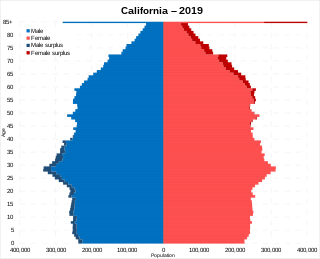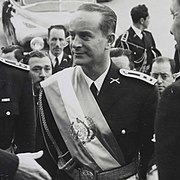
Belize is a country on the north-eastern coast of Central America. It is bordered by Mexico to the north, the Caribbean Sea to the east, and Guatemala to the west and south. It also shares a water boundary with Honduras to the southeast. It has an area of 22,970 square kilometres (8,867 sq mi) and a population of 441,471 (2022). Its mainland is about 290 km (180 mi) long and 110 km (68 mi) wide. It is the least populated and least densely populated country in Central America. Its population growth rate of 1.87% per year is the second-highest in the region and one of the highest in the Western Hemisphere. Its capital is Belmopan, and its largest city is the namesake city of Belize City. Belize is often thought of as a Caribbean country in Central America because it has a history similar to that of English-speaking Caribbean nations. Belize's institutions and official language reflect its history as a British colony.

Guatemala City, officially New Guatemala of Assumption, known locally as Guate, is the capital and largest city of Guatemala, and the most populous urban area in Central America. The city is located in the south-central part of the country, nestled in a mountain valley called Valle de la Ermita. The city is the capital of the Municipality of Guatemala and of the Guatemala Department.

With a population of about 129 million in 2022, Mexico is the 10th most populated country in the world. It is the largest Spanish-speaking country in the world and the third-most populous country in the Americas after the United States and Brazil. Throughout most of the 20th century Mexico's population was characterized by rapid growth. Although this tendency has been reversed and average annual population growth over the last five years was less than 1%, the demographic transition is still in progress; Mexico still has a large youth cohort. The most populous city in the country is the capital, Mexico City, with a population of 8.9 million (2016), and its metropolitan area is also the most populated with 20.1 million (2010). Approximately 50% of the population lives in one of the 55 large metropolitan areas in the country. In total, about 78.84% of the population of the country lives in urban areas, and only about 21.16% in rural ones.

North America is a continent in the Northern Hemisphere almost entirely within the Western Hemisphere. North America is bordered to the north by the Arctic Ocean, to the east by the Atlantic Ocean, to the southeast by South America and the Caribbean Sea, and to the west and south by the Pacific Ocean. The region includes Canada, the Caribbean, Central America, Greenland, Mexico, and the United States.

Central America is commonly said to include Guatemala, Belize, El Salvador, Honduras, Nicaragua, Costa Rica, and Panama. This definition matches modern political borders. Central America begins geographically in Mexico, at the Isthmus of Tehuantepec, Mexico's narrowest point, and the former country of Yucatán (1841–1848) was part of Central America. At the other end, before its independence in 1903 Panama was part of South America, as it was a Department of Colombia. At times Belize, a British colony until 1981, where English instead of Spanish is spoken, and where the population is primarily of African origin, has been considered not part of (Spanish-speaking) Central America.
The term Hispanic refers to people, cultures, or countries related to Spain, the Spanish language, or Hispanidad.

Mexican Americans are Americans of full or partial Mexican heritage. In 2019, Mexican Americans comprised 11.3% of the US population and 61.5% of all Hispanic and Latino Americans. In 2019, 71% of Mexican Americans were born in the United States, though they make up 53% of the total population of foreign-born Hispanic Americans and 25% of the total foreign-born population. The United States is home to the second-largest Mexican community in the world, behind only Mexico. Most Mexican Americans reside in the Southwest, with over 60% of Mexican Americans living in the states of California and Texas.
Race and ethnicity in the United States census, defined by the federal Office of Management and Budget (OMB) and the United States Census Bureau, are the self-identified categories of race or races and ethnicity chosen by residents, with which they most closely identify, and indicate whether they are of Hispanic or Latino origin.

Mexicans are the citizens and nationals of the United Mexican States.

Guatemalans are people connected to the country of Guatemala. This connection may be residential, legal, historical or cultural. For most Guatemalans, several of these connections exist.

Hispanic and Latino Americans are Americans of Spanish and/or Hispanic American ancestry. These demographics include all Americans who identify as Hispanic or Latino regardless of ancestry. As of 2020, the Census Bureau estimated that there were almost 65.3 million Hispanics and Latinos living in the United States and its territories.
This article details the geographical distribution of speakers of the German language, regardless of the legislative status within the countries where it is spoken. In addition to the German-speaking area in Europe, German-speaking minorities are present in many countries and on all six inhabited continents.
Latin Americans, sometimes referred to as Latinos, are the citizens of Latin American countries. Latin American countries and their diasporas are multi-ethnic and multi-racial. Latin Americans are a pan-ethnicity consisting of people of different ethnic and national backgrounds. As a result, some Latin Americans do not take their nationality as an ethnicity, but identify themselves with a combination of their nationality, ethnicity and their ancestral origins. Aside from the indigenous population, all Latin Americans have some Old World ancestors who arrived since 1492. Latin America has the largest diasporas of Spaniards, Portuguese, Africans, Italians, Lebanese and Japanese in the world. The region also has large German, French, Palestinian, Chinese and Jewish diasporas.

The Basque diaspora is the name given to describe people of Basque origin living outside their traditional homeland on the borders between Spain and France. Many Basques have left the Basque Country for other parts of the globe for economic and political reasons, with substantial populations in Chile, Colombia, Argentina and Uruguay with those of Basque ancestry in the hundreds of thousands; Peru, Venezuela, Guatemala, Canada, and the United States.

Immigration to Mexico has been important in shaping the country's demographics. Since the early 16th century, with the arrival of the Spanish, Mexico has received immigrants from Europe, Africa, the Americas, and Asia. Today, millions of their descendants still live in Mexico and can be found working in different professions and industries.

California is the most populated U.S. state, with an estimated population of 39.2 million as of January 1, 2022. It has people from a wide variety of ethnic, racial, national, and religious backgrounds.
Guatemalan Americans are Americans of full or partial Guatemalan descent. The Guatemalan American population at the 2010 Census was 1,044,209. Guatemalans are the sixth largest Hispanic group in the United States and the second largest Central American population after Salvadorans. Half of the Guatemalan population is situated in two parts of the country, the Northeast and Southern California.

Guatemala, officially the Republic of Guatemala, is a country in Central America. It is bordered to the north and west by Mexico, to the northeast by Belize, to the east by Honduras, to the southeast by El Salvador. It touched to the south by the Pacific Ocean and to the northeast by the Gulf of Honduras. With an estimated population of around 17.6 million, Guatemala is the most populous country in Central America and the 11th most populous country in the Americas. It is a representative democracy with its capital and largest city being Nueva Guatemala de la Asunción, also known as Guatemala City, the most populous city in Central America.

Emigration from Mexico is the movement of people from Mexico to other countries. The top destination by far is the United States, by a factor of over 150 to 1 compared to the second most popular destination, Canada.

Guatemala–Mexico relations are the historical and current bilateral relations between Guatemala and Mexico. Both nations are members of the Association of Caribbean States, Community of Latin American and Caribbean States, Organization of American States, Organization of Ibero-American States and the United Nations.














